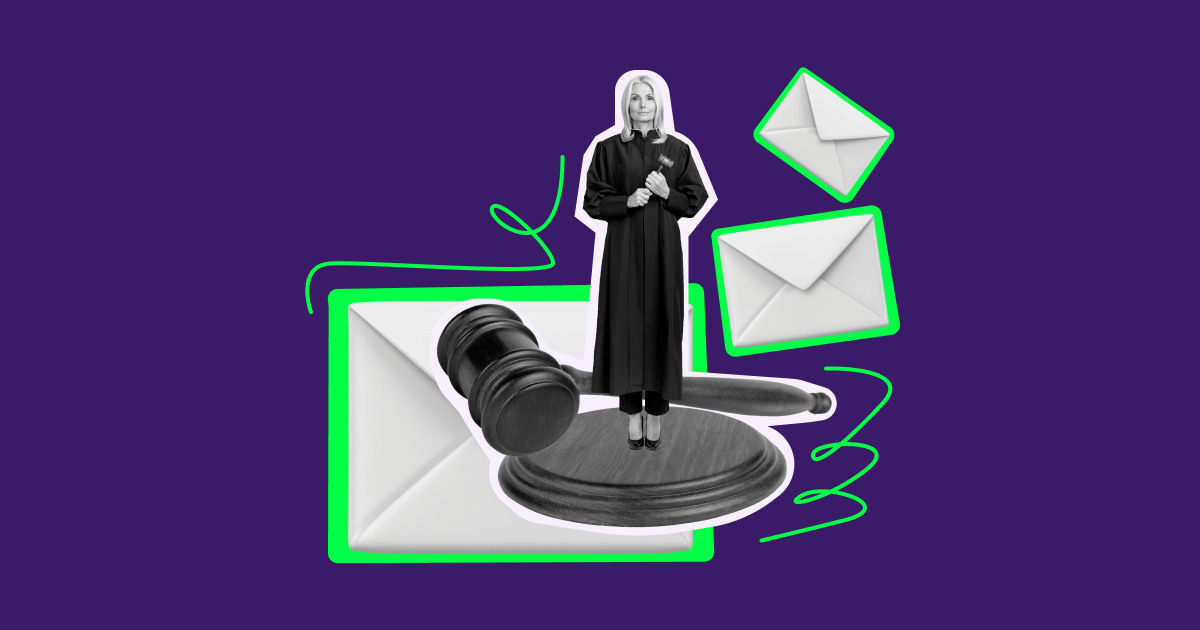Benefits of email marketing for law firms
Still not convinced to start using emails for your legal business? Let’s consider some of these benefits.
Personalized communication
Emails, as we mentioned, have a personal feel and offer an opportunity to cater to the needs of a certain subscriber group or even one recipient. So, if you want to talk to each prospect separately and privately while talking to all of them at the same time, email marketing is the best channel to do so!
For example, if you’re following up with a client on a company registration case, you could hit them up with an email checking their progress and suggesting further assistance. This way, you will show the client that your firm values its customers and is committed to providing ongoing assistance.
Building trust and credibility
Consistent, informative, and relevant email content helps your potential customers see your firm as trustworthy. For example, newsletters with updates on changes in law, case studies, and legal advice showcase your firm’s expertise in the legal niche.
Let’s say, your prospect seeks personal legal assistance in dealing with a convoluted business contract. As they search for a provider, they start receiving weekly newsletters from a firm specializing in business law. Newsletters cover recent changes in contract laws and give negotiation tips. This content helps your prospect recognize the firm’s competence. As a result, when they need assistance, they choose the firm with a newsletter instead of a competitor who doesn’t have one.
Regular engagement
Emails from your law firm will consistently remind your potential customers: hey, we exist, and we’re at your service! So, once they’re in need, they’ll contact you for more intel.
Imagine a law firm specializing in taxes. The firm runs a monthly newsletter with updates on taxation laws and practical tips for businesses so they optimize taxes. They also host and promote events like webinars on the topic. Potential customers keep seeing this content, so they think of this firm regularly — they formed a connection to the company, despite not using its services yet. The former clients will contact the firm again if needed because of the constant reminders.
Targeted messaging
As we said before, any business can benefit from email marketing. For example, email marketing for dentists is a great way to increase appointment bookings through regular and laser-targeted check-up reminders. Targeted messaging like this is possible for law firms too. If you don’t just send a regular newsletter but also spice your emails up with segmentation and personalization, you’ll maximize the effectiveness of each campaign and invest every penny the right way.
How can you target messages in the legal niche? Let’s imagine a firm with no narrow specialization. It can segment the contact list based on their interests. For example, send different messages to those interested in corporate matters and those interested in intellectual property law. One gets updates on laws affecting their business, and the other gets updates on trademark regulations. Both groups get the content they need, so they engage with your emails more often, which also implies better conversion rates.
Lower costs
Finally, emails are very cost-effective compared to other channels. For example, let’s compare it to direct mail. Direct mail requires spending a buck on professional design, printing, and postage. Meanwhile, emails in most cases require only paying for marketing software.
Even better, email is not just cheaper — it pays off better. Email marketing tends to have a higher ROI compared to social media, let alone paid ads. And it keeps growing — according to Statista, more than 50% of marketers reported a double increase in email ROI by December 2023.




















